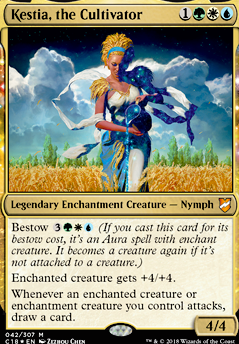Land (36)
-
1x
Academy Ruins

-
1x
Arid Mesa

-
1x
Breeding Pool

-
1x
Canopy Vista

-
1x
City of Brass

-
1x
Command Tower

-
1x
Flooded Strand

-
4x
Forest

-
1x
Glacial Fortress

-
1x
Hallowed Fountain

-
1x
Hinterland Harbor

-
1x
Homeward Path

-
4x
Island

-
1x
Mana Confluence

-
1x
Marsh Flats

-
1x
Misty Rainforest

-
4x
Plains

-
1x
Polluted Delta

-
1x
Prairie Stream

-
1x
Reliquary Tower

-
1x
Scalding Tarn

-
1x
Sunpetal Grove

-
1x
Temple Garden

-
1x
Verdant Catacombs

-
1x
Windswept Heath

-
1x
Wooded Foothills

-
1x
Yavimaya Coast

Support (8)
Creatures (25)
-
1x
Aesi, Tyrant of Gyre Strait

-
1x
Angelic Skirmisher

-
1x
Archangel of Thune

-
1x
Avacyn, Angel of Hope

-
1x
Avacyn, Guardian Angel

-
1x
Emancipation Angel

-
1x
Emeria Shepherd

-
1x
Ephara, God of the Polis

-
1x
Eternal Witness

-
1x
Farhaven Elf

-
1x
Heliod, God of the Sun

-
1x
Linvala, Shield of Sea Gate

-
1x
Lyra Dawnbringer

-
1x
Recruiter of the Guard

-
1x
Restoration Angel

-
1x
Shalai, Voice of Plenty

-
1x
Sigarda, Host of Herons

-
1x
Spellseeker

-
1x
Stoneforge Mystic

-
1x
Tatyova, Benthic Druid

-
1x
Thassa, Deep-Dwelling

-
1x
Thraben Watcher

-
1x
Timeless Witness

-
1x
Trophy Mage

-
1x
Wood Elves

CardDraw/Tutoring (8)
Commander (1)
Interaction (12)
-
1x
Arcane Denial

-
1x
Beast Within

-
1x
Counterspell

-
1x
Cyclonic Rift

-
1x
Generous Gift

-
1x
Mana Drain

-
1x
Path to Exile

-
1x
Stubborn Denial

-
1x
Supreme Verdict

-
1x
Swan Song

-
1x
Winds of Abandon

ManaRamp (10)
Suggestions
Updates Add
Comments
Attention! Complete Comment Tutorial! This annoying message will go away once you do!
Important! Formatting tips — Comment Tutorial — markdown syntax
Please login to comment
| Top Ranked |
|
| Date added | 6 years |
| Last updated | 3 years |
| Legality | This deck is not Commander / EDH legal. |
| Rarity (main - side) | 18 - 0 Mythic Rares 45 - 0 Rares 16 - 0 Uncommons 9 - 0 Commons |
| Cards | 100 |
| Avg. CMC | 3.14 |
| Tokens | Beast 3/3 G, Bird 2/2 U, Elephant 3-3 G, Enchantment Cleric 2/1 W, Timeless Witness 4/4 B, Treasure |
| Folders | Bantchantments, 75% Optimized EDH Decks, Decks I like, Uncategorized - Decks i want to have xD |
| Votes | |
| Ignored suggestions | |
| Shared with | |
| Views |


